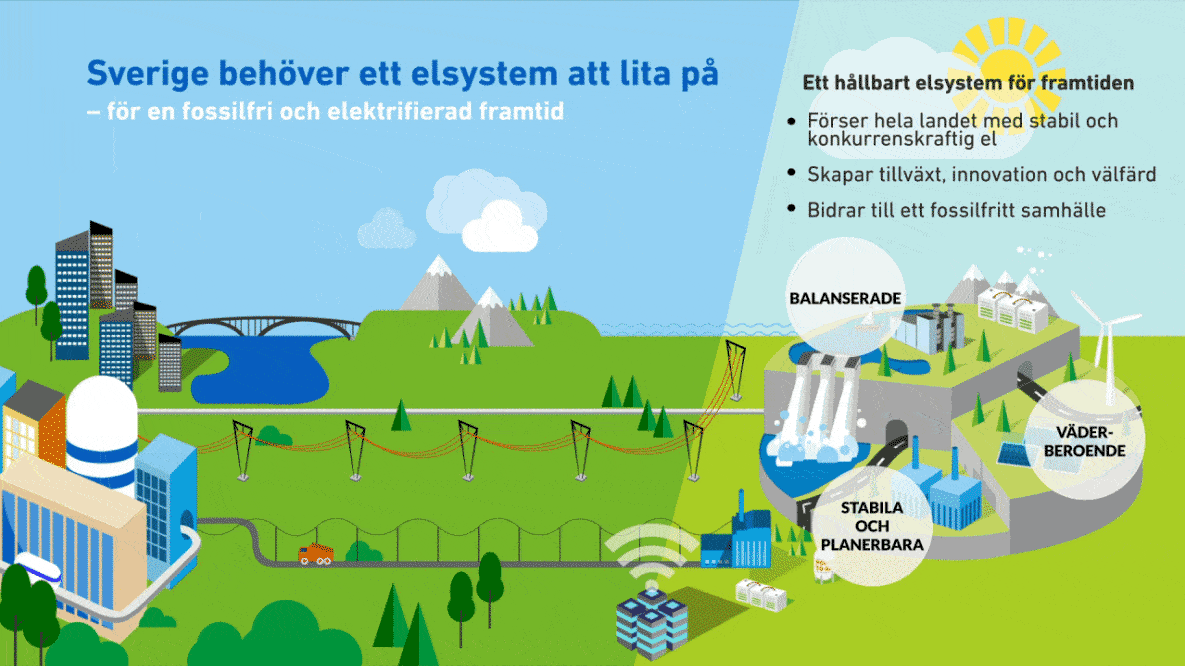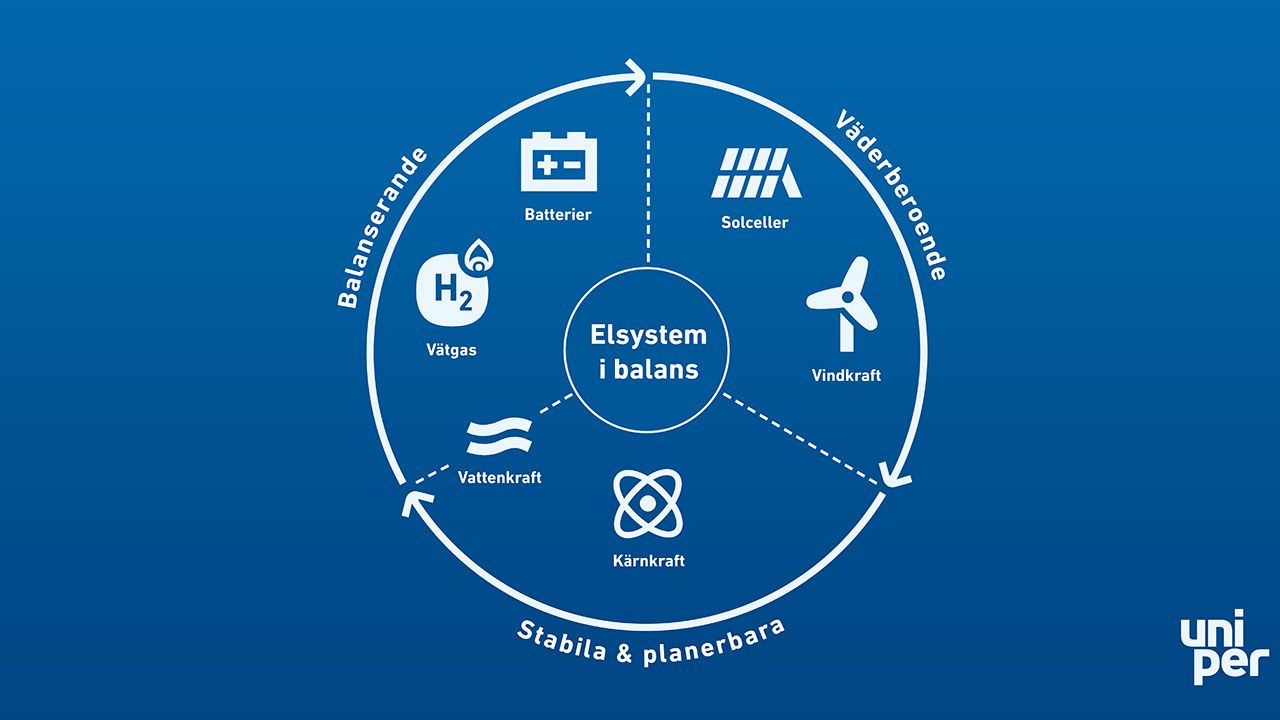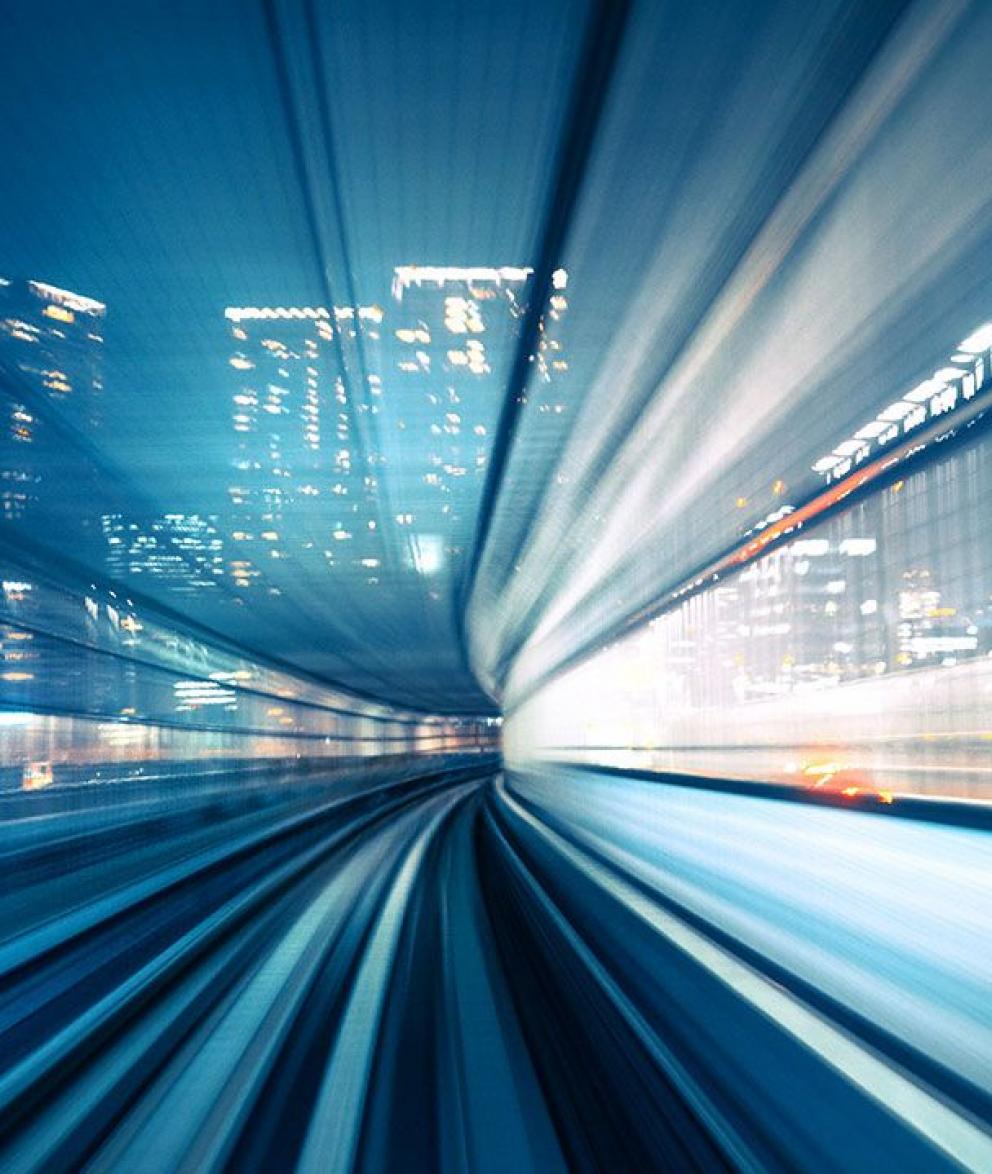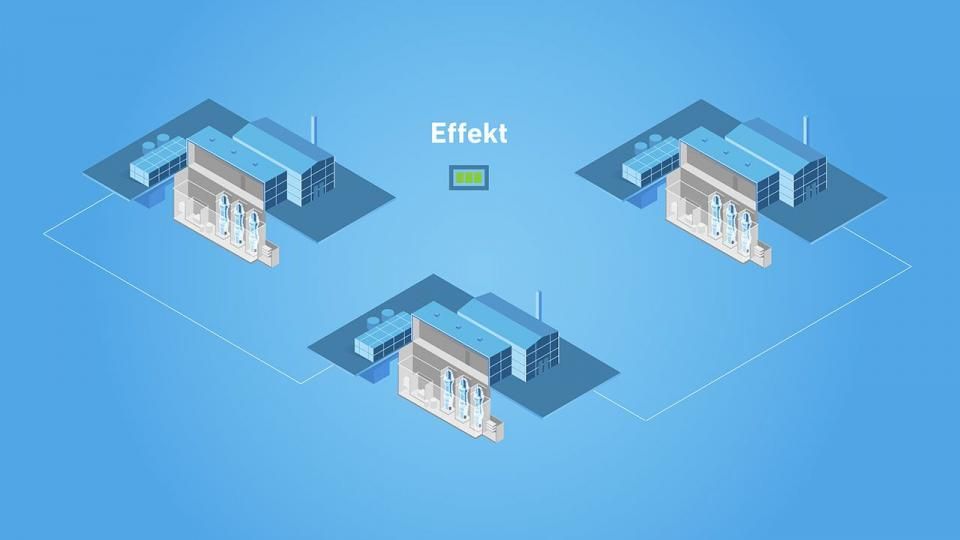In 1882, the first hydropower plant in Sweden was built. Back then, you could probably not have imagined that it laid the foundation for one of the world's best, safest and most climate-friendly energy systems. In the 70s and 80s, nuclear power was added to the mix, becoming an important pillar in Sweden's supply of base power, especially considering the oil crises of the 70s. In recent years, weather-dependent types of power, such as wind and solar power, have become increasingly important parts of the energy system. The system has been built and developed step by step, to meet our needs as society develops and changes.
Sweden needs to hit the ground running for electrification and energy transition
Sweden is in a new situation. If we are to maintain our competitiveness, while reaching the emission targets, historic investments are required.
We need 10 new TWh every year
A fossil-free and electrified Sweden will require a lot of stable, competitive and fossil-free electricity, much more than what we need today. An example: Today there are almost 600,000 rechargeable vehicles in Sweden. In less than ten years, in 2030, the figure is expected to have increased to as much as 2.5 million.
Svenska Kraftnät's latest forecast indicates that in 20-25 years we will use up to 300 TWh of electricity per year – mainly driven by the change in industry and the transportation sector.
We will also need to renew and replace parts of the electricity production. By 2045, all wind turbines built today will need to be replaced, and all of today's nuclear power plants will need to be operationally extended during the 2040s to enable another 20-30 years of energy production. In total, this means that we need to build or reinvest in approximately 250 TWh of electricity production to cope with the transformation of the Swedish society.
This means that there is a need of an increase of 10 TWh per year, a level that Sweden has so far been close to reaching when Swedish nuclear power was expanded in the 70s and 80s, and also in recent years with the expansion of wind power. It is thus doable, but requires a great deal of effort.
The role of the electricity system for industry and transport in the future
The future is smart, fossil-free and electrically empowered! That is why we need more electricity, not less. More specifically, we need between 100 and 150 TWh more than today.
Electrification is the key to a competitive future
Thanks to electrification, Sweden has many opportunities to succeed with its conversion to a fossil-free society and to continue to be a successful country. At Uniper, we believe in a future where Sweden is a competitive nation that achieves its climate goals through digitalized industry and an electrified transport sector. It is a society where we can retain world-leading industries and travel around the country in a different manner. We also envision a future with new electricity-intensive industries, such as fossil-free chemicals, electrofuels and a cyber industry. It is a bright and exciting future that is powered by electricity.

Climate innovations are important
Hydrogen can be one of the keys to a successful climate transition, and the development of production and use of hydrogen is currently accelerating. Hydrogen will be particularly important for sectors such as process industry and the transport sector, that face difficult challenges in becoming climate neutral.
According to the Swedish Energy Agency's proposal of a national hydrogen strategy, which was published in November 2021, hydrogen projects can lead to emission reductions of between 15 and 30 percent of Sweden’s total carbon dioxide emissions. In other words, it is a major contribution to the goal of Sweden achieving net zero emissions by 2045.
Several hydrogen clusters are now emerging in Sweden, and further developing the infrastructure is important for the industry to be able to continue investing in hydrogen. Project Air, SkyfuelH2 and Bothnia Link H2 are three innovative hydrogen projects that Uniper is working on.
Continued investments in research and development are also important, as is an increase in the skills of authorities and other societal actors.
A balanced energy system
If we want to continue to have stable access to fossil-free electricity in the future, it is necessary that there is a balance between the weather-dependent types of power that make electricity cheaper when the weather is favorable, and stable types of power that ensure that the system always works – such as hydropower and nuclear power. In addition, fast and flexible resources that can be used to balance the system at short notice are needed. Examples of such resources are energy storage, but also solutions that make it possible to down-regulate electricity production when we have a supply surplus. For example, Uniper has invested in installing battery storage at several of our production facilities in order to be able to offer the necessary ancillary services and stabilize the electricity system.

It is important to include all fossil-free power types in the target picture for the electricity system of the future in order to create incentives for continued research, innovation and investment. The plannable power sources must be compensated both for its electricity production and for its contribution to making the electricity system stable and reliable. We need to develop the electricity market model so that it fits today's needs. In addition the permit processes must go faster. We also need to continue to invest in technologies that are not yet mature enough to be exposed to competition, such as hydrogen and energy storage.
In addition to this, the electricity grid in large parts of the country will need to be replaced or strengthened, so that the transmission of electricity, within the country and to other countries, works even better. This is an important factor to ensure that Sweden can continue to contribute to global climate transition through the export of fossil-free electricity and fossil-free products.
The challenges are many, but we can be sure of one thing: if we are to succeed in creating a fossil-free and reliable electricity system that is competitive and meets the growing needs of society and the industry, we will need a balance between plannable, flexible and weather-dependent resources. And if we are to reach just over 300 TWh of electricity production by 2050, all fossil-free power types will need to increase significantly.
Sweden is in a new situation. If we are to be able to maintain our competitiveness, while at the same time achieving the emission targets, historically large investments are required. We've done it before, and we can do it again.
Find out more
We need to make a rapid switch from fossil-dependent to electrified transportation. Making this happen will require new technologies, large amounts of electricity and a reliable electricity system that can deliver the electricity that the transport sector will require.
Innovation and the electrification of society will be crucial if we are to continue being competitive in the future and manage the climate challenge and it is our base industry that drives development and will play a critical role in our switch to a climate-friendly society.
A lot has happened within nuclear power in the past decade, and many innovative projects aimed at making nuclear power an important part of the future’s fossil-free energy system are becoming a reality. One such innovation is the Small Modular Reactor, or “SMR.”



